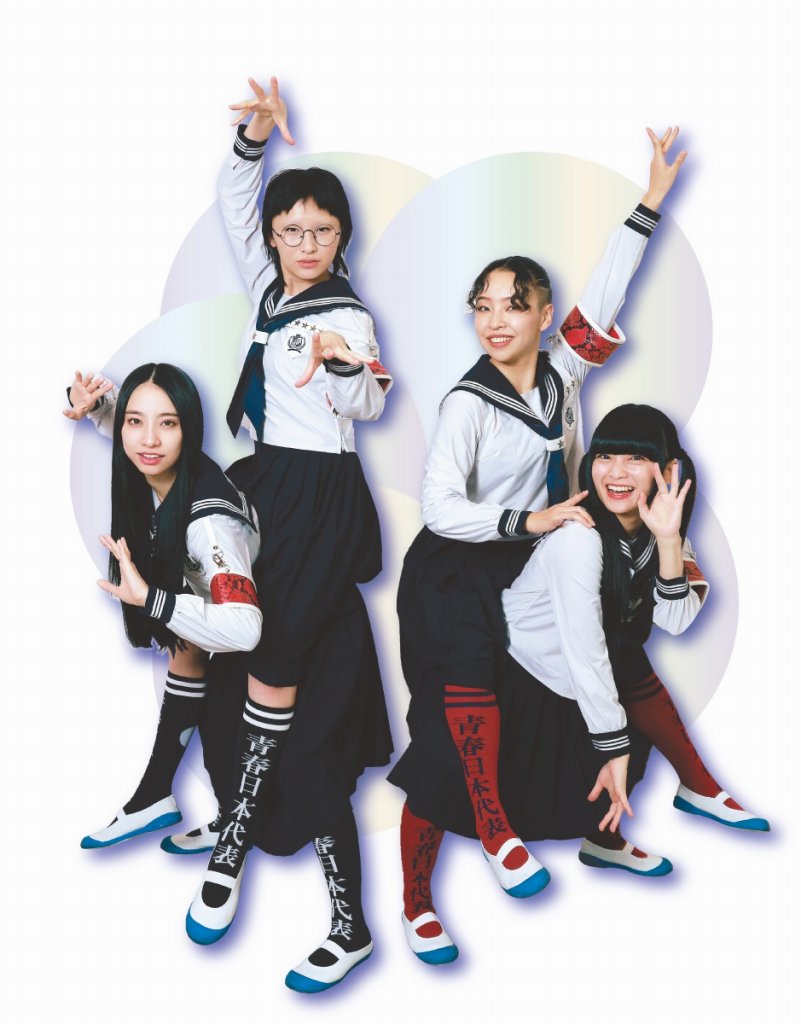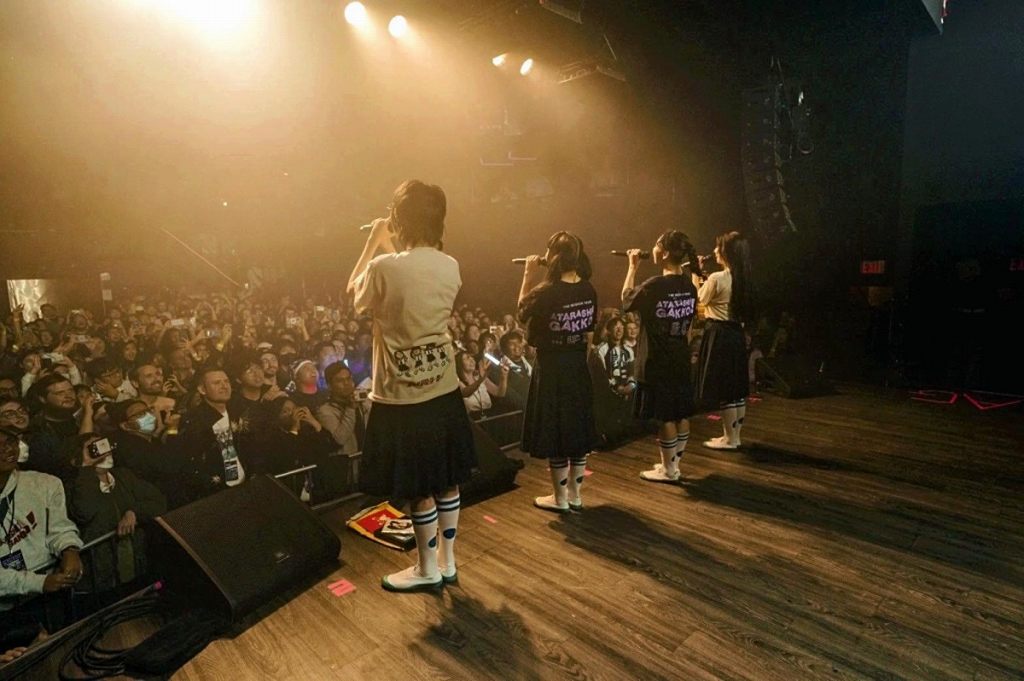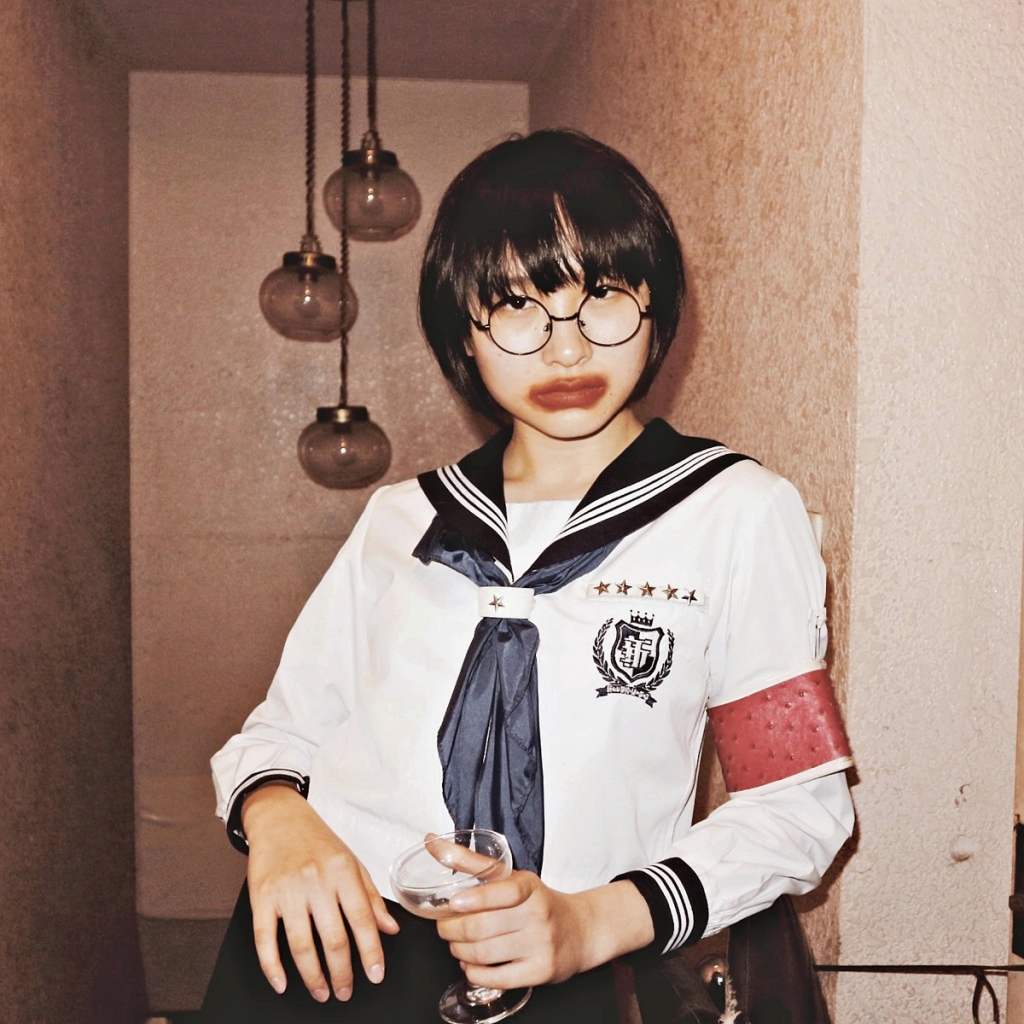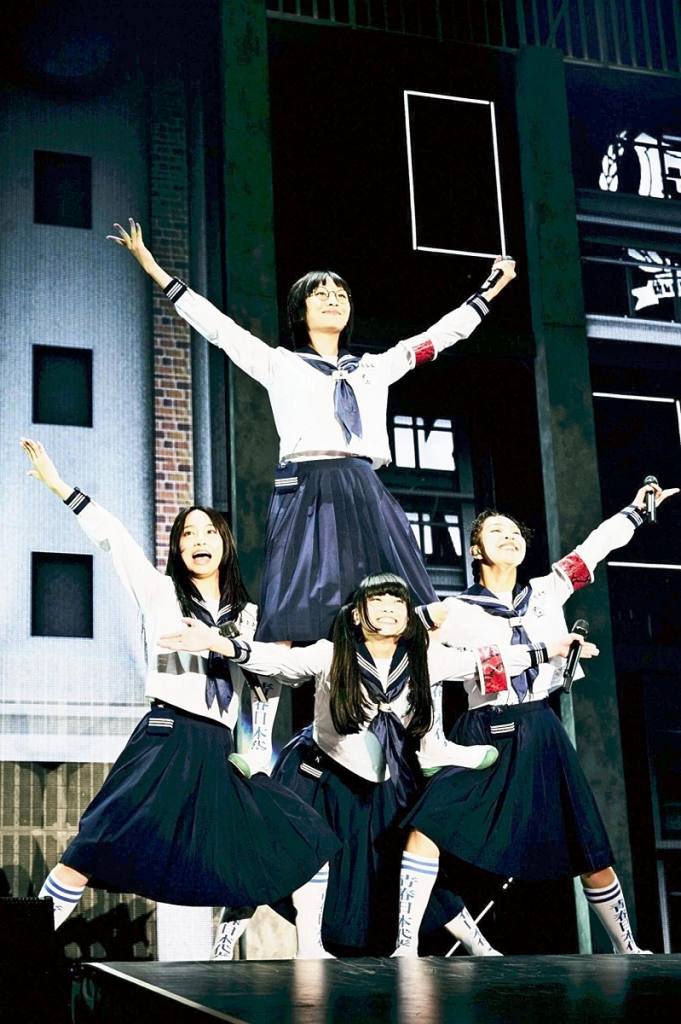

Dance vocal group Atarashii Gakko! is known for performing in distinctive sailor-style school uniforms under the mottos of “Marching outside the lines with individuality and freedom” and “Representing a new generation of Japanese youth.” The quartet had a breakthrough year in 2023.
At a performance at a club in Toronto on Nov. 13, the whole venue buzzed with excitement. Suzuka, the main vocalist of the group, called out: “We are from Japan. Hamidashite iku,” which means “we are marching outside the lines,” to which the audience replied, “Hamidashite iku!”
The highlight of the show was when Suzuka started singing “Otonablue” in her deep voice and the audience began to sing along.

Members of Atarashii Gakko! perform at a concert in Toronto.
“Canada is so far away from Japan. I didn’t realize that we really had fans there. There were also a lot of people who liked us so much that they learned Japanese. One of them told us ‘Good job’ in Japanese,” Rin said.
From Nov. 7 to Dec. 3, the group toured six U.S. cities as well as Canada, Mexico, Hong Kong and Thailand. In each country, Atarashii Gakko! met fans who wore sailor uniforms and sang their favorite songs by the group. “Thanks to social media, they love us even though they haven’t met us, because they can see us online endlessly,” Suzuka said.
‘Head-swinging dance’ invented
Atarashii Gakko! consists of four members — Suzuka, with her round glasses, stern singing voice, and overwhelming presence; Mizyu, with her hair in pigtails, moving briskly; Kanon, with her elegant long black hair; and Rin, with her close-cropped hair and firm character.
These four highly skilled dancers formed the group in 2015.
They started out dressed like honor students in their sailor uniforms and indoor school shoes, wearing armbands like the leaders of the student council.
“We have a spirit of obeying school rules. We don’t shorten our skirts or dress down like rebels,” Rin said. However, they march off the edge of what’s expected with outlandish ideas.
“We love to giggle at things like, ‘Oh, isn’t this crazy good?’ Everything starts with the coolness in the silliness and the badness,” Suzuka said.
What she said is reflected in the unique songs the group sings. Suzuka’s deep voice sounds nostalgic over the intense beats of rock, hip-hop, electro-pop and other genres. She loves Showa-era (1926-1989) songs with because of their unique verses and atmosphere, where she can feel the singer’s determination. “I learned about [Showa-era diva] Akina Nakamori from my mother. Showa songs made me love singing even more.”

One of the group’s most popular songs is “Otonablue,” which is about longing for love as an adult, but their most moving songs include lyrics about their feelings while in school.
“Giri Giri” is a song that explodes in despair with lyrics like “Teacher, I can’t do it right,” and “Koi no Shadanki” (Railroad crossing gate to love) is a song about how a girl feels when her best friend starts dating the person she loves.
The choreography is also creative, with the four members coming up with dazzling poses such as the “head-swinging dance,” which combines the style of the song with the individuality of each member. They also perform coordinated group gymnastics, piggyback riding and somersaults.
“We physically give it our all,” Mizyu said.
Kanon is the one who lifts the other members in the piggyback ride. “We think it makes the biggest impact and makes us look big,” she said.
Steady efforts
It took some time for Atarashii Gakko! to gain buzz. The group posted videos of themselves singing and dancing to their own songs, as well as domestic and international hits on TikTok. In May 2020, during the beginning of the spread of COVID-19, they released “Otonablue.” They shot both the music video and the single cover themselves.
Gradually, their efforts became recognized as a video of the four singing a song called “Koi Geba” piqued the interest of the U.S. record label 88rising. The label released the funky song “Nainainai” in 2021, and Atarashii Gakko! made their worldwide debut and became “representatives of a new generation of Japanese youth.” The four flew to the United States and recorded an EP called “Snacktime” that was produced by Money Mark, known for his work with the Beastie Boys.
Then, the tide suddenly turned last year. The music video for “Otonablue” aired on a TV singing show, and the number of views on the video — which was already being shared on social media — skyrocketed.

Members of Atarashii Gakko! make a coordinated group gymnastic pose at Tokyo Gymnasium.
“The song and the performance of ‘Otonablue’ are both so lovely. We’ve been trying to get the message across, and we’ve been thinking that one day it would get across, and it finally did this year [in 2023],” Suzuka said.
Now that they are all in their 20s, the meaning of the sailor-style school uniform has changed for the four of them. “At first, we were middle school and high school students, so we were just being ourselves. But now, when we go out into the world and wear school uniforms, we feel like we are representing Japan. The school uniform is as indispensable as a combat uniform,” Kanon said.
“The uniform is essential as the foundation of the group. But we recently got new clothes. I hope you can look forward to seeing the four of us change into different outfits,” Mizyu said.
The “representatives of a new generation of Japanese youth” will continue to bring fun to all over the world this year.
